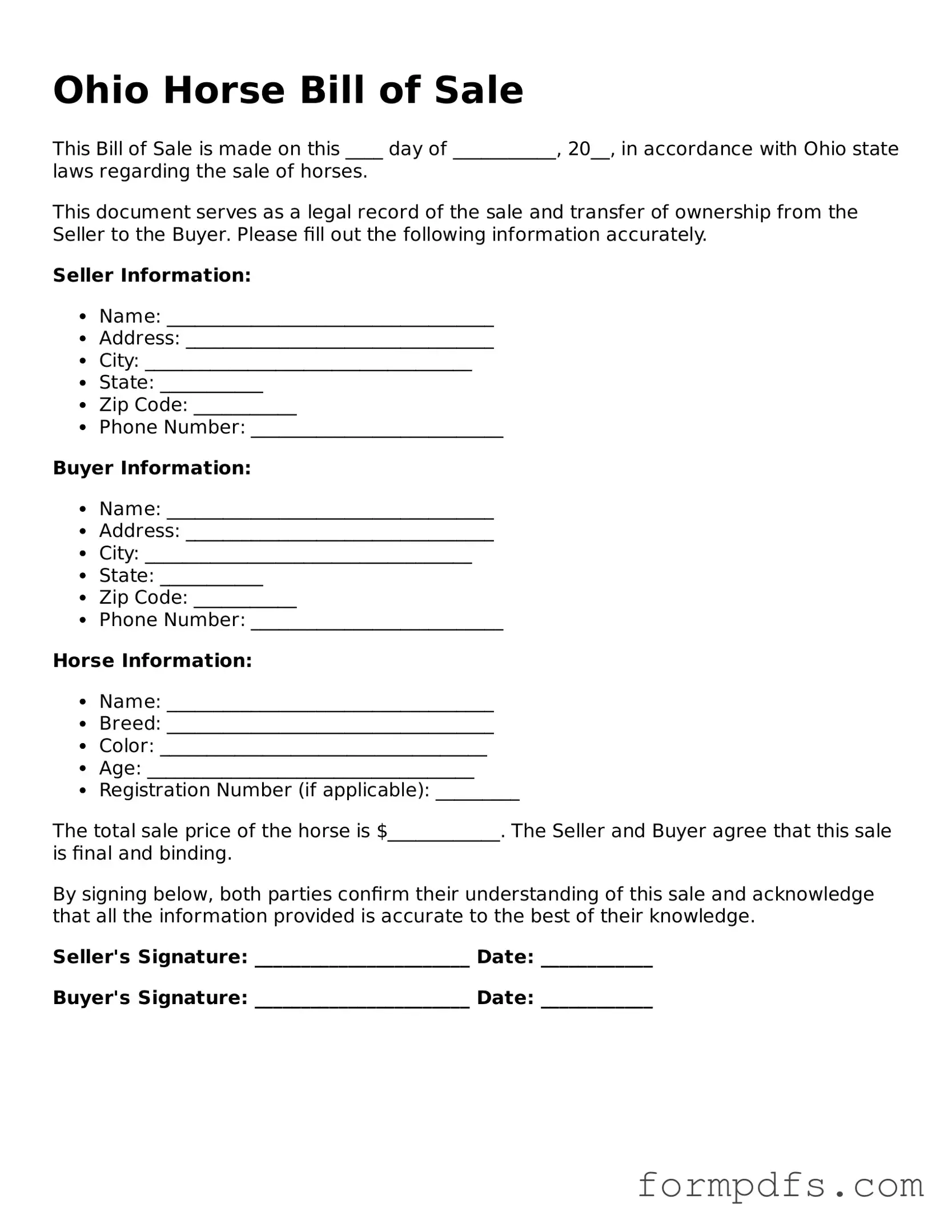What is an Ohio Horse Bill of Sale form?
The Ohio Horse Bill of Sale form is a legal document used to record the sale of a horse in the state of Ohio. This form serves as proof of the transaction between the buyer and the seller. It includes essential details such as the horse's description, the sale price, and the names and addresses of both parties involved. Having this document helps to protect the interests of both the buyer and the seller, providing clarity and accountability in the sale process.
Why is it important to have a Horse Bill of Sale?
A Horse Bill of Sale is important for several reasons. First, it provides legal evidence of ownership transfer, which can be crucial in case of disputes. Second, it outlines the terms of the sale, including any warranties or guarantees regarding the horse's health and condition. Third, having a written record can assist in future transactions, such as registration with breed associations or other equine organizations. Overall, it helps ensure a smooth transition of ownership and protects both parties' rights.
What information should be included in the form?
The Ohio Horse Bill of Sale form should include specific information to be effective. Key details include the horse's name, breed, age, color, and any unique identifying marks. Additionally, the sale price and payment method should be clearly stated. The names, addresses, and signatures of both the buyer and the seller are also necessary. If applicable, any terms regarding health guarantees or warranties should be documented as well. Including this information helps to avoid misunderstandings later on.
Is the Horse Bill of Sale form required by law in Ohio?
